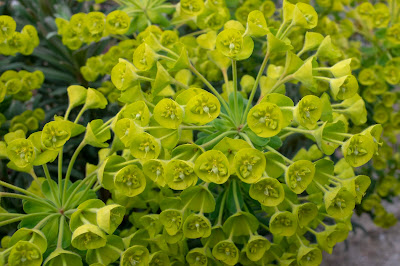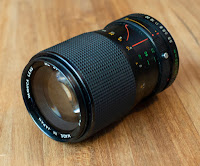Cost: $19.99 (average market price $34.99)
And here is my first review of a Yashica lens. Let's start softly with a standard push'n pull zoom lens. Now, this is an ML lens, so positioned as a professional lens from Yashica (DBS being the cheaper commercial lenses), but it's still a zoom lens from the 1960's - 1970's, so probably not as good as today's standards.
It's a nice looking lens, resembling a little bit the Pentax-M lenses from the same era. And as the Pentax lenses, it feels very smooth for both the focus as aperture rings. Zoom has a nice resistance to it, allowing for precise zooming, and avoiding any lens creep. Although not marketed as a Macro lens, it does have a Macro dial, limiting the focus length to 1.9 M.
Compared to the Zeiss lens available for the Contax lens mount, this lens is much smaller, and still providing a very useful range of focal lengths. It's not a fast lens, but not slow either for a zoom lens of the time.
Contrast is good, and color rendition is beautiful but not always consistent. Every now and then, the camera did a different and unexpected white balance. It's fairly sharp. especially in Macro mode, but gets a little soft in the corners. Little color aberration in the middle, but a strong yellow aberration on the left, and a purple one on the right.
Another problem, or gift if you like it, is that the lens is very prone to lens flares. I did not shoot with a hood, but it might be recommended if you want to avoid it. But if you are looking for lens flares, for special effects, this is a good lens to achieve it with.
So, not a bad lens, but not a great lens neither. I might keep it for now, as I think Yashica ML lenses are one of those interesting lens collections that are worthwhile collecting, with a small hope of one day having a complete collection.
Yashica DSB lenses are single coated, ML lenses are multi coated (ML stands for Multi-Layer) and were later renamed as MC for Multi Coated. Contrary to the quality jump from DSB to ML, there is no distinguishable quality difference between ML and MC lenses.
Focal Length: 35-105mm
Maximum Aperture: F3.5-4.5Minimum Aperture: F22
Image Format: 35mm
Lens Mount: Yashica/Contax
Optics: 15 lenses in 11 groups
Blades: 6
Focussing: Manual
Minimum Focus: 150cm, closer with Macro setting
Filter Size: 55mm
Weight: 467g
Length: 85-90mm
Production: 1960's
Serial Number: 1267529
Made in: Japan
More information on: Yashica
Samples
 |
| 1/40 sec - ISO6400 - Handheld |
 |
| 1/60 sec - ISO6400 - Handheld |
 |
| 1/60 sec - ISO6400 - Handheld |
 |
| 1/60 sec - ISO6400 - Handheld |
 |
| 1/80 sec - ISO100 - Handheld |
 |
| 1/320 sec - ISO100 - Handheld |
 |
| 1/250 sec - ISO100 - Handheld |
 |
| 1/250 sec - ISO100 - Handheld |
 |
| 1/640 sec - ISO100 - Handheld - Cropped |
 |
| 1/80 sec - ISO100 - Handheld |
 |
| 1/60 sec - ISO250 - Handheld |
 |
| 1/60 sec - ISO640 - Handheld - Cropped |
 |
| 1/60 sec - ISO200 - Handheld |
 |
| 1/60 sec - ISO250 - Handheld |
 |
| 1/60 sec - ISO200 - Handheld |
PetaPixel
cdegroot.com
flikr.com






















